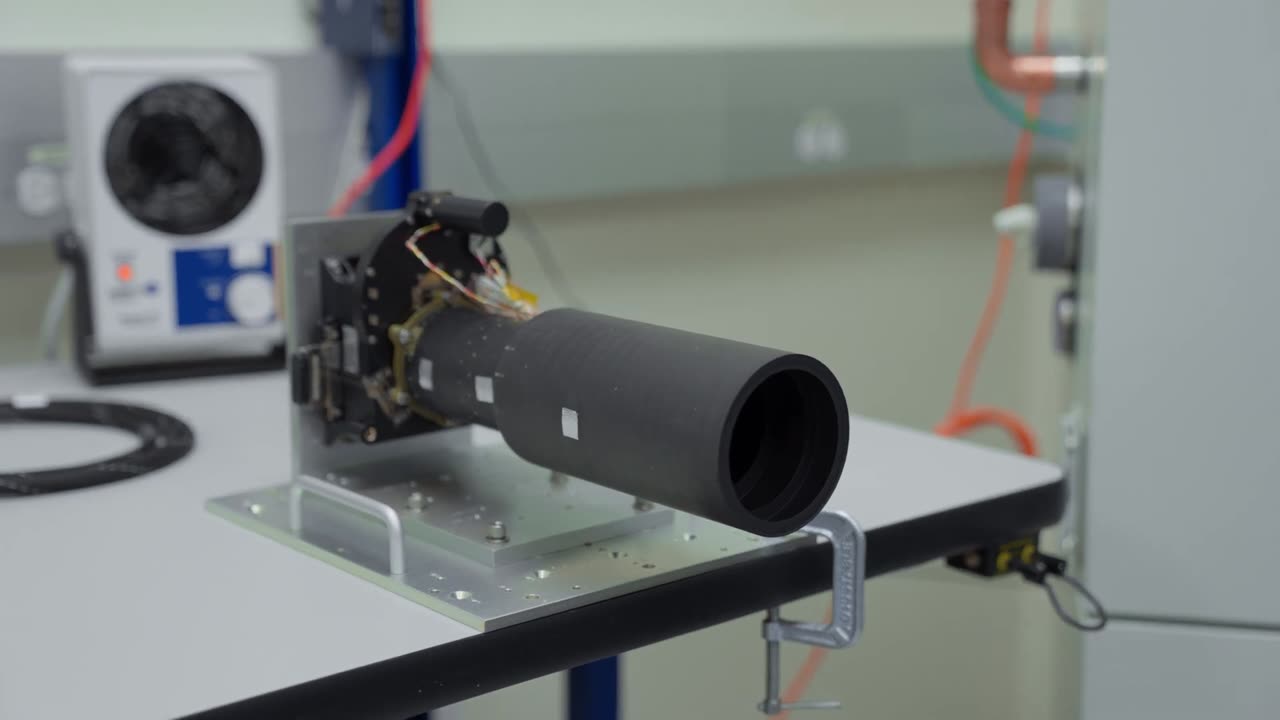Premium Only Content

How Will #MissionToPsyche See Its Target Asteroid?
#asteroid #targetasteroid #missionpsyche #psyche #mars #moon #space #rocketlaunch #spaceexploration #marsexploration# nasamission #nasaspacemission #spacemission #astrology #spaceimaging #spacetechnology #spacescience #moonexploration #jupiter #stakleytingo #wolfchamp #lunar #lunarexploration #spacecraft #spacrocket #spaceshuttel
How Will #MissionToPsyche See Its Target Asteroid?
NASA’s Psyche spacecraft will use highly sensitive cameras to allow scientists to see a metal-rich asteroid that’s never been imaged up close before.
Planetary scientist and Psyche mission co-investigator Jim Bell of Arizona State University, along with his instrument team, developed this critical technology in collaboration with Main Space Science Systems.
Psyche’s multispectral imager consists of a pair of identical cameras with filters and telescopic lenses that will photograph the surface of the asteroid in different wavelengths of light. It will provide the data needed to build a digital terrain model of the asteroid’s surface, contribute to revealing Psyche’s geochemistry and composition, and help with navigation.
Whether the asteroid Psyche is the partial core of a planetesimal (a building block of the rocky planets in our solar system) or primordial material that never melted, scientists expect the mission to help answer fundamental questions about Earth’s own metal core and the formation of our solar system.
Psyche is expected to launch in October 2023. The spacecraft will begin orbiting the asteroid Psyche in 2029.
Learn about this first-of-its-kind mission at: https://www.nasa.gov/psyche/.
Credit: NASA/JPL-Caltech/ASU
Produced by: True Story Films
Wolf Champ
How Will #MissionToPsyche See Its Target Asteroid?
NASA’s Psyche spacecraft will use highly sensitive cameras to allow scientists to see a metal-rich asteroid that’s never been imaged up close before.
Planetary scientist and Psyche mission co-investigator Jim Bell of Arizona State University, along with his instrument team, developed this critical technology in collaboration with Main Space Science Systems.
Psyche’s multispectral imager consists of a pair of identical cameras with filters and telescopic lenses that will photograph the surface of the asteroid in different wavelengths of light. It will provide the data needed to build a digital terrain model of the asteroid’s surface, contribute to revealing Psyche’s geochemistry and composition, and help with navigation.
Whether the asteroid Psyche is the partial core of a planetesimal (a building block of the rocky planets in our solar system) or primordial material that never melted, scientists expect the mission to help answer fundamental questions about Earth’s own metal core and the formation of our solar system.
Psyche is expected to launch in October 2023. The spacecraft will begin orbiting the asteroid Psyche in 2029.
Learn about this first-of-its-kind mission at: https://www.nasa.gov/psyche/.
Credit: NASA/JPL-Caltech/ASU
Produced by: True Story Films
Wolf Champ
How Will #MissionToPsyche See Its Target Asteroid?
NASA’s Psyche spacecraft will use highly sensitive cameras to allow scientists to see a metal-rich asteroid that’s never been imaged up close before.
Planetary scientist and Psyche mission co-investigator Jim Bell of Arizona State University, along with his instrument team, developed this critical technology in collaboration with Main Space Science Systems.
Psyche’s multispectral imager consists of a pair of identical cameras with filters and telescopic lenses that will photograph the surface of the asteroid in different wavelengths of light. It will provide the data needed to build a digital terrain model of the asteroid’s surface, contribute to revealing Psyche’s geochemistry and composition, and help with navigation.
Whether the asteroid Psyche is the partial core of a planetesimal (a building block of the rocky planets in our solar system) or primordial material that never melted, scientists expect the mission to help answer fundamental questions about Earth’s own metal core and the formation of our solar system.
Psyche is expected to launch in October 2023. The spacecraft will begin orbiting the asteroid Psyche in 2029.
Learn about this first-of-its-kind mission at: https://www.nasa.gov/psyche/.
Credit: NASA/JPL-Caltech/ASU
Produced by: True Story Films
Wolf Champ
How Will #MissionToPsyche See Its Target Asteroid?
NASA’s Psyche spacecraft will use highly sensitive cameras to allow scientists to see a metal-rich asteroid that’s never been imaged up close before.
Planetary scientist and Psyche mission co-investigator Jim Bell of Arizona State University, along with his instrument team, developed this critical technology in collaboration with Main Space Science Systems.
Psyche’s multispectral imager consists of a pair of identical cameras with filters and telescopic lenses that will photograph the surface of the asteroid in different wavelengths of light. It will provide the data needed to build a digital terrain model of the asteroid’s surface, contribute to revealing Psyche’s geochemistry and composition, and help with navigation.
Whether the asteroid Psyche is the partial core of a planetesimal (a building block of the rocky planets in our solar system) or primordial material that never melted, scientists expect the mission to help answer fundamental questions about Earth’s own metal core and the formation of our solar system.
Psyche is expected to launch in October 2023. The spacecraft will begin orbiting the asteroid Psyche in 2029.
Learn about this first-of-its-kind mission at: https://www.nasa.gov/psyche/.
Credit: NASA/JPL-Caltech/ASU
Produced by: True Story Films
Wolf Champ
How Will #MissionToPsyche See Its Target Asteroid?
NASA’s Psyche spacecraft will use highly sensitive cameras to allow scientists to see a metal-rich asteroid that’s never been imaged up close before.
Planetary scientist and Psyche mission co-investigator Jim Bell of Arizona State University, along with his instrument team, developed this critical technology in collaboration with Main Space Science Systems.
Psyche’s multispectral imager consists of a pair of identical cameras with filters and telescopic lenses that will photograph the surface of the asteroid in different wavelengths of light. It will provide the data needed to build a digital terrain model of the asteroid’s surface, contribute to revealing Psyche’s geochemistry and composition, and help with navigation.
Whether the asteroid Psyche is the partial core of a planetesimal (a building block of the rocky planets in our solar system) or primordial material that never melted, scientists expect the mission to help answer fundamental questions about Earth’s own metal core and the formation of our solar system.
Psyche is expected to launch in October 2023. The spacecraft will begin orbiting the asteroid Psyche in 2029.
Learn about this first-of-its-kind mission at: https://www.nasa.gov/psyche/.
Credit: NASA/JPL-Caltech/ASU
Produced by: True Story Films
Wolf Champ
-
 15:34
15:34
Misha Petrov
15 hours agoReacting To TikTok’s Most DELUSIONAL Takes!
31.3K22 -
 1:52:24
1:52:24
Squaring The Circle, A Randall Carlson Podcast
1 day ago#032 Flournoy Holmes' Artwork Helped Define The Southern Rock Phenomenon of The Early 1970's
24K3 -
 19:56
19:56
inspirePlay
1 day ago $0.34 earnedWalking with Lions & Facing Africa’s Wild Side | Safari Adventure with the Grid Championship Crew!
14.7K1 -
 10:50
10:50
RTT: Guns & Gear
1 day ago $1.05 earnedBudget Friendly Carry 2011: EAA Girsan Brat 2311
15.3K3 -
 3:49:06
3:49:06
Alex Zedra
16 hours agoLIVE! New Game | Nuclear Nightmare
106K14 -
 25:08
25:08
MYLUNCHBREAK CHANNEL PAGE
1 day agoUnder The Necropolis - Pt 2
288K78 -
 1:45:59
1:45:59
Spittin' Chiclets
1 day agoCanadian Chokejob - Game Notes Live From Chicago - 12.28.2024
265K32 -
 9:18
9:18
Space Ice
1 day agoThe Guyver - Alien Bug Suits, Exploding Dragons, & Mark Hamill - Weirdest Movie Ever
169K27 -
 9:31
9:31
Silver Dragons
1 day agoSilver Has Failed - Can it Set the Record Next Year? THIS BANK SAYS YES!
6.3K2 -
 7:08
7:08
GBGunsRumble
19 hours agoGBGuns Range Report 28DEC24
3.63K1